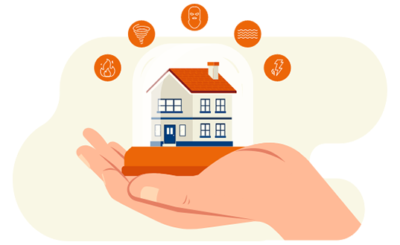When it comes to homeownership, two crucial components often come into play: home insurance and home loans. While they both relate to owning a home, their functions, importance, and implications are distinct. Understanding these vital differences is essential for anyone navigating the realm of homeownership. Let’s delve into the specifics of each and explore why they are both crucial for homeowners.
Home Insurance: Protecting Your Investment
Home insurance, also known as homeowners insurance, is a financial safety net that protects homeowners against potential losses and damages to their property. It typically covers the physical structure of the home, personal belongings, liability for accidents on the property, and additional living expenses if the home becomes uninhabitable due to a covered event.
Key Features of Home Insurance:
- Property Coverage: Home insurance provides coverage for the structure of the home itself, including any detached structures such as garages or sheds. It also extends coverage to personal belongings, such as furniture, appliances, and electronics, in case of damage or theft.
- Liability Protection: Home insurance includes liability coverage, which can help protect homeowners from legal claims and medical expenses if someone is injured on their property.
- Additional Living Expenses: If a covered event renders the home uninhabitable, home insurance can cover the costs of temporary living arrangements, such as hotel stays or rental accommodation.
Importance of Home Insurance:
Home insurance is crucial for protecting the significant financial investment that homeowners make in their properties. It provides peace of mind knowing that if disaster strikes, such as a fire, burglary, or natural disaster, the financial burden of repairing or replacing damaged property can be mitigated.
Home Loans: Facilitating Homeownership
A home loan, also referred to as a mortgage, is a type of loan specifically designed to help individuals or families purchase a home. Since most people cannot afford to buy a home outright, home loans enable them to borrow money from a lender, usually a bank or mortgage company, to finance the purchase of a property.
Key Features of Home Loans:
- Principal and Interest Payments: Home loans consist of principal (the amount borrowed) and interest (the cost of borrowing the money). Borrowers typically make monthly payments that include both principal and interest.
- Down Payment: Homebuyers are usually required to make a down payment on the property, which is a percentage of the purchase price. The size of the down payment can vary depending on factors such as the type of loan and the borrower’s financial situation.
- Loan Terms: Home loans come with various terms, including the loan amount, interest rate, repayment period (usually 15 or 30 years), and type of interest rate (fixed or adjustable).
Importance of Home Loans:
Home loans play a pivotal role in making homeownership accessible to a broader range of individuals and families. Without the ability to borrow money through a mortgage, many people would be unable to purchase a home and build equity for themselves and their families.
Conclusion:
While home insurance and home loans serve different purposes in the realm of homeownership, they are both essential components of the process. Home insurance protects homeowners from unforeseen risks and financial losses, while home loans provide the means to finance the purchase of a home. Understanding the differences and importance of both is crucial for anyone embarking on the journey of homeownership. By securing both adequate insurance coverage and a suitable home loan, homeowners can protect their investment and achieve their dreams of owning a home.





